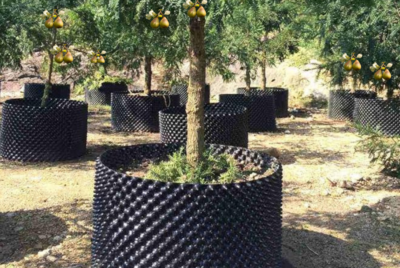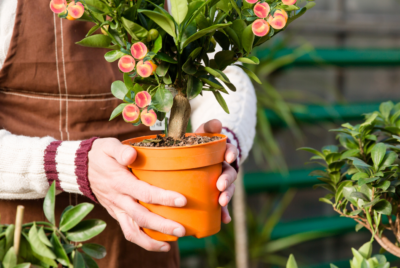Step-by-Step Guide To Growing Oranges In Your Backyard
Most citrus lovers dream of plucking fresh, juicy oranges right from their own backyard. With the right knowledge and care, you can turn that dream into a reality. Growing oranges in your backyard not only provides you with a steady supply of vitamin C but also adds a touch of freshness to your daily life. In this comprehensive guide, we will walk you through the necessary steps to successfully cultivate oranges in your backyard, from selecting the right variety to nurturing your tree to maturity. Are you ready to initiate on this citrus-growing journey? Let’s get started!
Key Takeaways:
- Choose the right variety: Select a variety of orange tree that suits the climate and soil conditions of your backyard.
- Plant in a sunny location: Oranges need plenty of sunlight to thrive, so choose a spot in your yard that receives at least 6-8 hours of sunlight per day.
- Proper watering: Ensure the orange tree gets sufficient water, especially during the hot summer months. A drip irrigation system can be helpful in maintaining consistent moisture levels.
- Fertilize regularly: Use a balanced fertilizer specifically formulated for citrus trees to promote healthy growth and fruit production.
- Protect from pests and diseases: Keep an eye out for common citrus pests like aphids and mites, and treat them promptly to prevent damage to your orange tree.
Understanding Orange Trees
Some of the most popular fruit trees for backyard cultivation are orange trees. These citrus trees not only provide delicious fruit but also add beauty with their glossy green leaves and fragrant blossoms. To successfully grow oranges in your backyard, it’s imperative to understand the different types of orange trees and factors to consider before planting.
Types of Orange Trees Suitable for Backyard Cultivation
| Orange Tree | Description |
| Washington Navel | Known for its seedless and easy-to-peel fruit, ideal for fresh consumption. |
| Valencia | Produces sweet and juicy fruit, perfect for juicing. |
| Blood Orange | Has a rich red color and unique flavor, great for culinary use. |
| Cara Cara | Offers pink-fleshed fruit with a tangy taste, a gourmet favorite. |
| Meyer Lemon | Not a true orange but a cross between a lemon and mandarin, known for its sweet flavor. |
Recognizing the characteristics of each type will help you choose the best orange tree for your backyard based on your preferences and climate.
Factors to Consider Before Planting
One of the crucial aspects to consider before planting orange trees in your backyard is the location. Ensure the area receives full sunlight, has well-draining soil, and protection from strong winds. Another factor to keep in mind is the size of the mature tree to prevent overcrowding and allow proper growth.
- Soil Quality – Ensure the soil is rich in nutrients and has good drainage.
- Watering Needs – Orange trees require regular watering, especially during the growing season.
- Climate Compatibility – Choose a variety that is suitable for your climate zone to ensure successful growth.
The proper consideration of these factors will contribute to the healthy growth and abundant fruit production of your orange trees over time.
Preparation for Growing Oranges in your Backyard
Selecting the Right Location
Location is key when it comes to planting oranges in your backyard. Choose a spot that receives plenty of sunlight, as oranges thrive in full sun. Make sure the area has good drainage to prevent waterlogged soil, which can lead to root rot. Additionally, consider proximity to buildings or trees that could provide wind protection, as strong winds can damage young orange trees.
Soil Preparation and Requirements
If you want to grow healthy and fruitful orange trees, soil preparation is crucial. Make sure the soil is well-draining and slightly acidic, with a pH between 6 and 7. Test the soil to determine its pH level and nutrient content, and amend it if necessary. Adding organic matter like compost can improve soil structure and fertility, providing a good foundation for your orange trees.
For instance, you may need to add sulfur to lower the pH if the soil is too alkaline, or lime to raise it if the soil is too acidic. Avoid planting orange trees in heavy clay soil, as it can lead to poor root development and water stagnation. Taking the time to prepare the soil properly before planting will pay off in healthier trees and a bountiful harvest in the future.
Step-by-Step Guide to Planting and Care
Many people dream of having fresh oranges right in their backyard, and with the right care, this dream can become a reality. Planting and caring for orange trees require dedication and attention to detail, but the rewards are worth it. Here is a step-by-step guide to help you on your journey to growing oranges in your backyard.
Step-by-Step Instructions for Planting Oranges
| Step | Instruction |
| 1 | Choose a sunny location with well-drained soil. |
| 2 | Dig a hole twice as wide and just as deep as the root ball. |
| 3 | Remove the tree from its container and gently loosen the roots. |
| 4 | Place the tree in the hole and backfill with soil, firming it gently. |
| 5 | Water thoroughly and mulch around the base of the tree. |
Tips for Ongoing Care and Maintenance
| Tip | Description |
| 1 | Water regularly, especially during dry spells. |
| 2 | Prune dead or damaged branches to promote new growth. |
| 3 | Fertilize with a balanced fertilizer in spring and summer. |
Little pests and diseases can affect orange trees, so monitor your tree regularly for any signs of trouble. If you notice anything unusual like yellowing leaves or pest infestations, take action promptly to prevent further damage. Perceiving these issues early can save your tree from more severe problems down the line.
Instructions: Remember that watering is crucial for orange trees, especially during the growth period. While oranges can withstand drought conditions, consistent watering will result in better fruit production. Additionally, pruning is necessary to keep the tree healthy and promote fruit growth. Be on the lookout for common pests such as aphids and scale insects, and treat them promptly to avoid damage. By following these care instructions diligently, you can enjoy a bountiful harvest of delicious, home-grown oranges.
Harvesting and Utilization
Signs of Ripeness and Harvesting Techniques
Unlike other fruits, oranges do not continue to ripen once they are picked from the tree. It is important to wait until the oranges are fully ripe before harvesting. Signs of ripeness include a bright citrus smell, firmness, and deep orange color. To harvest, gently twist the orange from the tree or use pruning shears to clip the stem about half an inch above the fruit. Be cautious while climbing ladders or using shears to avoid accidents. Harvesting at the right time ensures the best flavor and juiciness in your oranges.
Using and Preserving Your Oranges
While fresh oranges are a delight to eat on their own, there are many ways to utilize and preserve this citrus fruit. If you have an abundance of oranges, consider making fresh orange juice, marmalade, or even adding slices to salads for a burst of flavor. Oranges can also be preserved by making candied peel or freezing the juice for later use. The high vitamin C content in oranges makes them a valuable addition to your diet, whether consumed fresh or preserved.
If you plan to preserve oranges, ensure they are washed thoroughly and stored in a cool, dry place. For long-term preservation, consider canning or freezing oranges to enjoy their benefits throughout the year.
Troubleshooting Common Issues
Identifying and Addressing Pests and Diseases
To ensure your orange trees thrive, it is crucial to monitor for pests and diseases regularly. Common pests include aphids, scale insects, and spider mites, while diseases such as citrus canker and root rot can also pose a threat. With prompt identification, you can address these issues effectively. Treat pests with insecticidal soap or neem oil and prune affected areas of the tree to control diseases.
Weather-Related Concerns and Protection Methods
One of the key factors affecting orange tree health is the weather. Extreme temperatures, frost, or excessive rainfall can damage the tree and affect fruit production. One effective method to protect your orange trees from weather-related concerns is to provide proper shelter or covering during harsh weather conditions. Additionally, watering the trees deeply and mulching around the base can help regulate soil temperature and moisture levels.
For instance, during frost events, covering your orange trees with frost cloth can provide insulation and prevent damage to the foliage and fruit. Monitoring weather forecasts and taking preventative measures can go a long way in ensuring the health and productivity of your orange trees.
Pros and Cons of Growing Oranges in your Backyard
| Pros | Cons |
| Delicious, fresh oranges at your fingertips | Potential for pests and diseases |
| Beautiful and fragrant blossoms | Requires regular maintenance and care |
| Rich source of vitamin C and antioxidants | Time and effort required for proper pruning |
| Enhances the aesthetic appeal of your backyard | Climate limitations for successful growth |
| Encourages outdoor activity and connection with nature | Space restrictions in smaller yards |
Advantages of Growing Oranges in your Backyard
Clearly, growing oranges in your backyard can provide you with a fresh and delicious supply of vitamin C and antioxidants. It also adds beauty and fragrance to your outdoor space, encouraging you to spend more time in nature and stay active.
Challenges and Considerations
For those considering backyard orange cultivation, it’s important to be aware of the challenges and considerations. Cons such as potential pests and diseases, regular maintenance needs, and climate limitations can require dedication and expertise to overcome.
Summing up on Growing Oranges in your Backyard
Ultimately, growing oranges in your backyard can be a rewarding and fruitful endeavor if done correctly. Following a step-by-step guide like the one provided in this article can help you successfully nurture and harvest your own citrus trees. Be mindful of, proper care and maintenance are key to bountiful and delicious fruit. For more detailed information on planting and caring for citrus trees, check out this How To Plant Citrus Trees | Step-by-Step Planting & Care guide. Happy gardening!
FAQ’s about Growing Oranges in your Backyard
Q: Why should I consider growing oranges in my backyard?
A: Oranges are a popular and nutritious fruit that can be enjoyed fresh or used in various culinary dishes. By growing your own oranges in your backyard, you can ensure a fresh and organic supply of this vitamin C-rich fruit right at your fingertips.
Q: What are the basic requirements for growing oranges in my backyard?
A: Oranges require plenty of sunlight, well-draining soil with a pH between 6 and 7, regular watering, and protection from frost. Additionally, they thrive in warm climates and may need extra care during colder winters.
Q: How can I choose the right variety of oranges to grow in my backyard?
A: The choice of orange variety depends on your climate, space availability, and personal preferences. Some popular orange varieties for backyard cultivation include Valencia, Navel, and Blood oranges. Consider factors such as taste, seedlessness, and fruiting season when selecting a variety.
Q: What are some common pests and diseases that may affect orange trees in my backyard?
A: Orange trees can be susceptible to pests such as aphids, mites, and scale insects, as well as diseases like citrus canker and root rot. Regularly inspect your trees for any signs of infestation or disease, and promptly take measures such as pruning, using natural predators, or applying organic treatments to control them.
Q: How can I ensure a bountiful harvest of oranges from my backyard trees?
A: To promote a successful harvest of oranges, make sure to provide proper care and maintenance to your trees throughout the year. This includes regular watering, fertilizing, pruning, and protecting the trees from extreme weather conditions. Additionally, monitor the fruit development and harvest them at the right time for the best flavor and quality.




